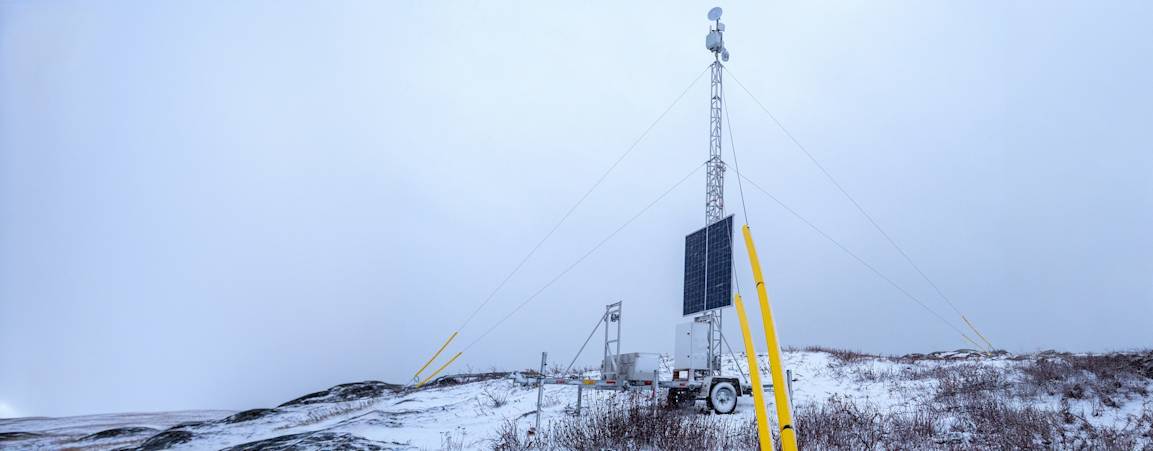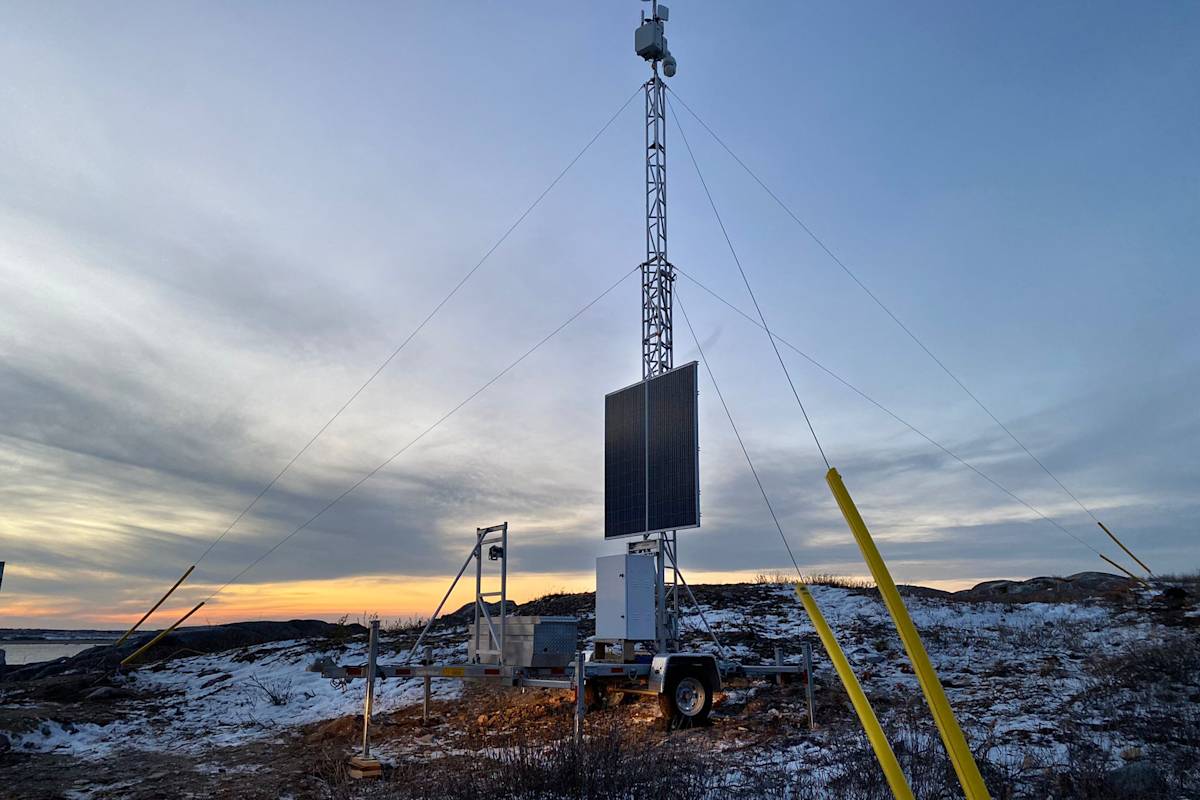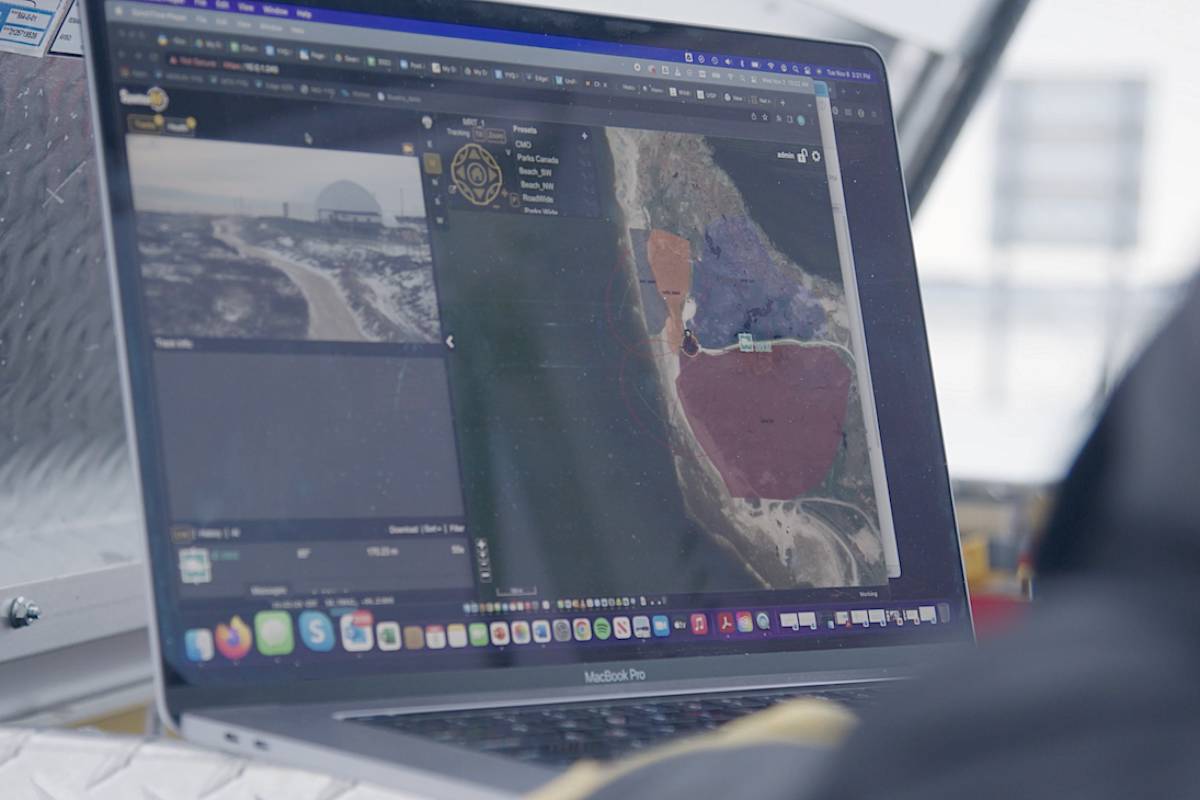Photo: Kieran McIver / Polar Bears International

Bear-dar: Early Detection Radar
Keeping Polar Bears and People Safe and Separate
Polar Bears International is collaborating with Spotter Global to create an early alert radar system dubbed "Bear-dar," designed to alert communities and remote camps when a bear is approaching.
Early warning systems like Bear-dar could be a game-changer in improving safety. By providing communities with advance notice of polar bear activity, Bear-dar can give them time to take precautions and avoid potentially dangerous encounters. This not only protects people's lives but reduces the likelihood of conflicts that might harm either humans or bears.
This partnership highlights the importance of combining different fields to tackle complex environmental challenges. When conservation organizations like Polar Bears International work alongside technology companies like Spotter Global, we can create innovative solutions to lessen the impacts of climate change on vulnerable species like polar bears while ensuring human safety.

Photo: Kt Miller / Polar Bears International
Bear-dar FAQ
What is Bear-dar?
Bear-dar is a medium-range radar system that can survey a wide area. Polar Bears International is training it to detect and identify polar bears.
This early warning radar system can alert communities or remote camps of approaching polar bears, with no negative impact on the bears.
Why is polar bear detection needed?
In our warming world, polar bears are forced to spend more and more time on land, where they risk encounters with people. To make sure both polar bears and people stay safe, it’s important to develop more safety options for communities.
If people can spot a polar bear as it approaches, they’re better able to use non-lethal deterrents like noise-makers or flares to drive the bear away—preventing harm to both polar bears and people.
How does Bear-dar work?
The radar units are built by Spotter Global to withstand extreme weather, so we decided to test whether it could detect polar bears and serve as an early warning system for Arctic communities and camps.
During the testing phase, we fine-tuned the AI to correctly identify polar bears from other animals or objects (e.g., people, moose, fox).
When the radar “sees” a polar bear, it can be programmed to sound an alarm, turn on a light (e.g., red light) or send a text message to designated responders.
Bear-dar also collects geospatial data, location information, and speed data that could potentially help with other studies.
How was Bear-dar trained to recognize bears?
Initial testing
Polar Bears International initially tested different radar systems in Churchill, Manitoba, Canada before determining that Spotter Global’s radar was a good fit for further research.
Why Churchill?
Polar bears gather near Churchill every fall as they wait for the sea ice to return, so we know we reliably have polar bears to test.
The town of Churchill supported the idea and welcomed the Polar Bears International team.
Polar Bears International already has network infrastructure in place in Churchill to power its Polar Bear Cams and Tundra Connections® webcasts.
Manitoba’s conservation officers do an amazing job of spotting approaching bears and responding to reports from citizens, but human patrols in the North can be limited by darkness, foggy weather, or whiteout snowstorms. Ground-based radar systems could complement the efforts of Churchill’s Polar Bear Alert officers, sending an alert of an approaching bear and giving officers time to respond in a non-lethal manner in areas with poor access or at times of reduced visibility.
These systems could also help other northern communities that lack the resources for human patrols and could be used to protect remote camps and workstations.
Calibration
The AI within the radar tower needs more data to learn what is a polar bear and what is not — such as a person walking, or a caribou grazing.
The Assiniboine Park Zoo, with multiple bears in a known location, could help us calibrate a new application of this existing radar technology in a controlled setting. In 2024, the Bear-dar tower was set up at the zoo. Now we know it can detect polar bears (and other species) consistently.
Testing in the wild
The Bear-dar radar tower was relocated to the Hudson Bay coast in 2024 for its final testing season in Churchill, Manitoba. The system appeared to work extremely well for both detection and identification of polar bears.
What's happening with Bear-dar now?
After years of testing, we successfully installed Bear-dar in Eureka, Nunavut. Not only is this the first time Bear-dar has been deployed for real-world use, but it’s also the furthest north! With our partners in the Canadian government, we’ll collect data in 2025 and 2026 to continue refining this groundbreaking tool for polar bear safety so it can be rolled out to more communities.

Photo: Erinn Hermsen / Polar Bears International
Thank You
We extend our heartfelt gratitude to the Assiniboine Park Conservancy and the Assiniboine Park Zoo for their invaluable contribution in enhancing the radar’s accuracy by training its AI system to better identify polar bears. Thanks also to NMC Security for helping to install the radar, and Milestone Systems for storing the data.
We also thank Utah’s Hogle Zoo and the Royal Bank of Canada’s Tech for Nature Fund for their generous funding support.
Special thanks to the town of Churchill for their cooperation during the test phase of the project, and to Frontiers North Adventures for allowing Polar Bears International to mount a device on the Tundra Buggy Lodge.
Lastly, we are deeply grateful to our donors, whose contributions have made the Bear-dar project possible.

About Spotter Global
Spotter Global's compact radar technology is a game-changer in enhancing safety and security across various domains, including protecting human populations and wildlife like polar bears. The ability of their radars to track objects and detect movement in restricted areas, coupled with automated warning notifications, demonstrates a proactive approach to preventing conflicts and ensuring the safety of communities and wildlife.
The expansion of Spotter's offerings beyond critical infrastructure to cover a wide range of areas and verticals showcases the versatility and adaptability of their radar systems. This adaptability is crucial in addressing diverse security challenges, whether protecting military forces, critical infrastructure, or wildlife habitats.
Spotter Global's commitment to quality, customer security, and manufacturing its products in the USA underscores its dedication to providing reliable and effective solutions. Their collaboration with Polar Bears International highlights the potential for technology to contribute to conservation efforts and address the complex challenges posed by climate change.
For those interested in learning more about Spotter Global's advanced compact radar technology and its applications, visiting their website at SpotterGlobal.com would be a great starting point to explore their innovative solutions further.

Photo: Handcraft Creative
Support Our Work
Polar Bears International is a registered nonprofit in both the U.S. and Canada.



Photo: Robert Sarren
Join Us On Our Journey
Become part of a community committed to protecting polar bears with our free newsletter.










